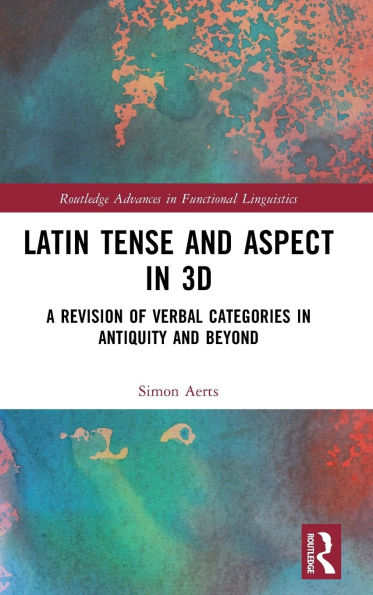Table of Contents
List of Tables
List of Figures
Preface
Chapter 1 A modern approach to languages from the past
1.1 Introduction
1.1.1 Latin: a tale of a lot more than one language
1.1.2 Book structure
1.2 Case in point: the Latin tense system
1.2.1 Latin tense morphology
1.2.2 Latin tense semantics
1.2.3 Relative tense theory
1.2.4 Aspectual theory
1.3 Essential forms and functions
1.3.1 Verb tenses
1.3.2 Tense
1.3.3 Aspect
1.3.4 Aktionsart
1.3.5 Situations and events
1.3.6 Foreground-background
1.4 Systemic Functional Linguistics
1.4.1 Metafunctions
1.4.2 Stratification
1.4.3 Indeterminacy, choice and change
1.4.4 System networks and the cline of instantiation
1.5 Towards a 3D-approach to Latin tense and aspect
1.5.1 Multidimensional systems in SFL
1.5.2 Usage-based language data and the importance of context
1.5.3 Audience involvement and its encoding in the lexicogrammar
1.5.4 Metafunctional levels of TENSE and ASPECT
1.5.5 Systematization of traditional labels
Notes
Chapter 2 From theory to practice: an exposition and illustration of the applied methodology
2.1 Three-dimensional tense and aspect in Latin, Romance and English
2.1.1 Tense
2.1.2 Aspect
2.2 Historical pragmatics: problems and solutions
2.2.1 Aspects of working with closed-corpus languages
2.2.2 Towards an operationalization of pragmatic interpretations
2.3 An exposition of the applied close-reading methodology
Notes
Chapter 3 A corpus-based description of tense usage in Latin
3.1 Foregrounded events and situations
3.1.1 The narrative perfect, the annalistic present and the historic present
3.1.2 The scenic imperfect
3.1.3 The ingressive perfect and the complexive perfect
3.1.4 The perfect of success and the progressive imperfect
3.2 Simultaneous situations and events
3.2.1 The historic present and the narratorial perfect
3.2.2 The perfect of cessation
3.2.3 The circumstantial imperfect and simultaneous events
3.3 Anteriors and resultatives
3.3.1 The pluperfect tense
3.3.2 The perfect and imperfect tenses with past anterior meaning
3.3.3 Past resultatives vs. past simultaneous situations
3.4 The narrative tenses in non-narrative discourse
3.4.1 Absolute past situations
3.4.2 The present perfect
3.4.3 The actual, general and literary present and the present resultative
3.5 Marked textual meanings of the narrative tenses
3.5.1 The anticipatory present, the suspensive imperfect and the perfect of conclusion
3.5.2 The authorial present
Notes
Chapter 4 Aspect in the Latin tense system: a matter of perspective
4.1 The survival of aspect in the language of Gregory of Tours
4.2 Narrative perspectives: a linguistic and literary tradition
4.2.1 External perspectives: the voices of the narrator and the author
4.2.2 Internal perspectives: the illusion of unmediated truth
4.2.3 Eyewitness perspectives: showing vs. telling
4.2.4 Temporal anomalies in the subjunctive: displacement encoded in the grammar
Notes
Chapter 5 General conclusions
Chapter 6 References
6.1 Primary sources
6.2 Secondary sources
Index



